Imagine transforming your living space into a thriving oasis of greenery, even with the busiest of schedules. Whether you’re a budding gardener or a seasoned plant enthusiast, there’s something magical about the tranquility and beauty that indoor plants bring into our homes. In this guide, “Top 10 Indoor Plants for Busy People,” we’ve curated a selection of plants that are not only low-maintenance but also incredibly rewarding, ensuring that your green space flourishes with minimal effort.
For both the novice and the expert, the joy of seeing a plant thrive is unparalleled, and these carefully chosen species promise just that. Each plant on our list is a testament to nature’s resilience and beauty, designed to fit seamlessly into your lifestyle, no matter how hectic it may be. By the end of this guide, you’ll feel empowered with practical tips and knowledge, confident that you can cultivate your own home sanctuary with ease and delight.
Spider Plant (Chlorophytum comosum)
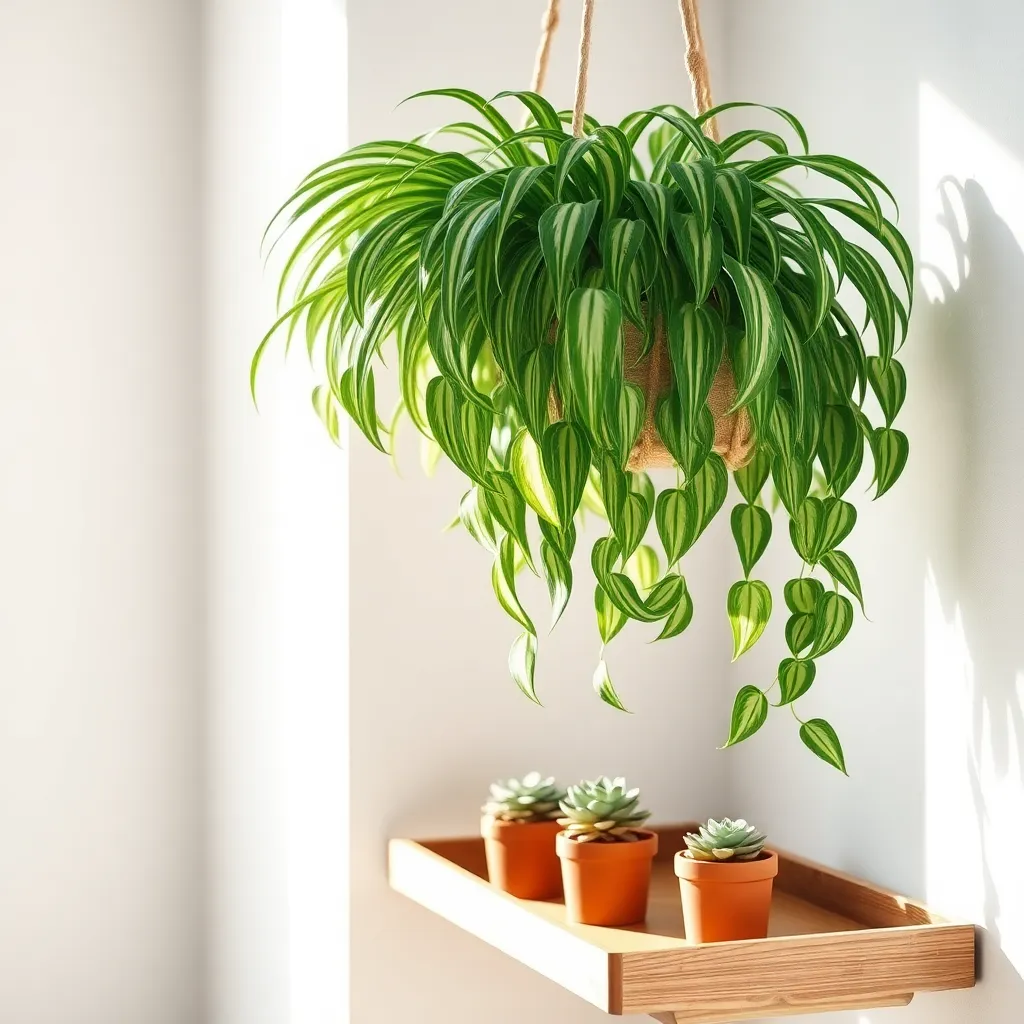
The Spider Plant, or Chlorophytum comosum, is an excellent choice for those seeking a low-maintenance indoor plant. Its ability to thrive in a variety of light conditions makes it perfect for busy individuals who may not have time to fuss over their plants.
One of the key care tips for Spider Plants is their watering regimen. They prefer to dry out between waterings, so it’s best to water them every 1-2 weeks, ensuring the soil feels dry to the touch before the next watering.
For optimal growth, plant your Spider Plant in a well-draining potting mix. You can use a standard houseplant soil or even a cactus mix, which helps prevent root rot by allowing excess water to escape easily.
Advanced gardeners can propagate Spider Plants easily through their offshoots, known as “pups.” Simply cut a pup from the main plant and place it in water or soil to encourage root development before potting it independently.
Peace Lily (Spathiphyllum spp.)
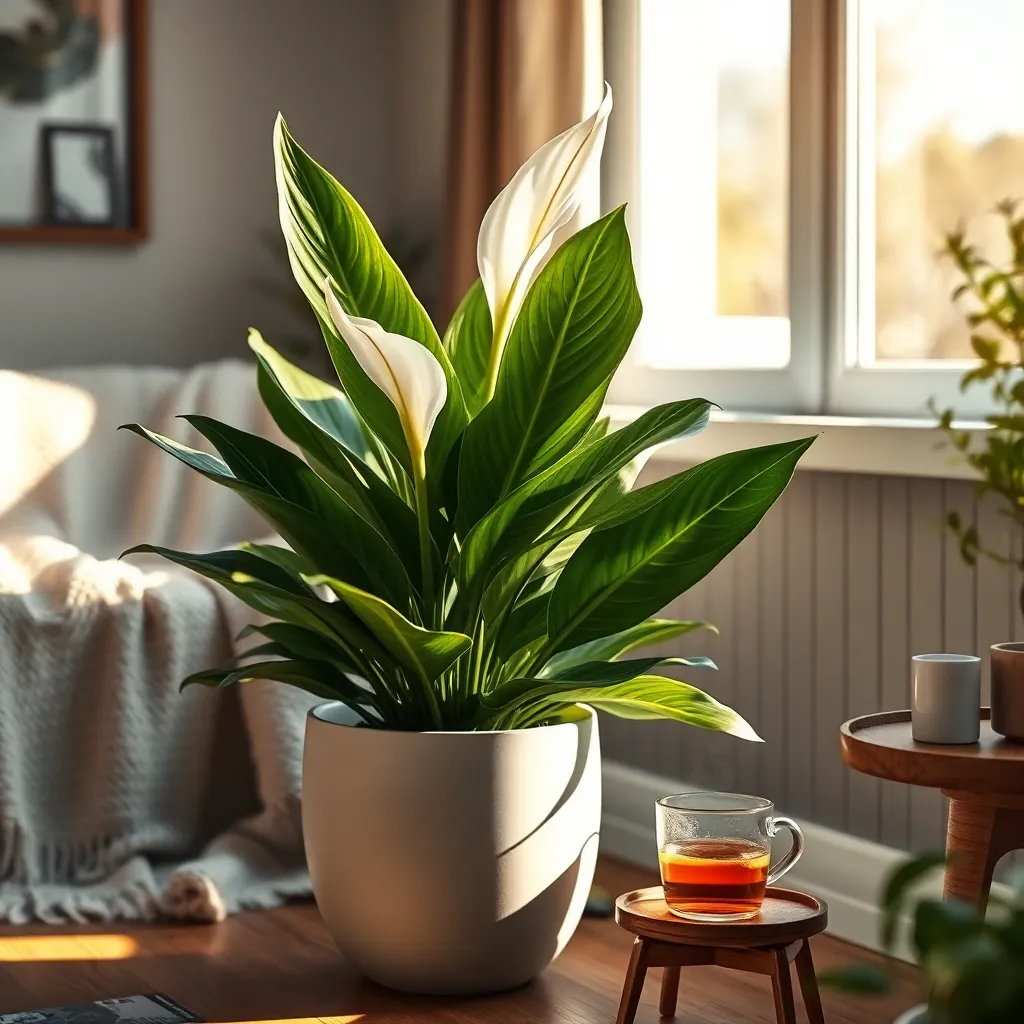
Peace Lilies are an excellent choice for busy individuals due to their low-maintenance nature and ability to thrive in low-light conditions. These plants are known for their lush green foliage and elegant white blooms, which can brighten up any indoor space.
When it comes to watering, Peace Lilies prefer to have their soil kept consistently moist but not soggy. It’s best to water them when the top inch of soil feels dry to the touch, ensuring they receive just the right amount of moisture.
For optimal growth, place your Peace Lily in a spot that receives indirect sunlight, as direct sunlight can scorch the leaves. If you’re looking to boost humidity around your plant, consider placing it on a tray of pebbles filled with water or misting it occasionally.
A basic potting mix that retains some moisture while allowing for good drainage is ideal for Peace Lilies. You might also consider fertilizing them with a balanced liquid fertilizer every six to eight weeks during the growing season to promote lush growth and abundant blooms.
Chinese Evergreen (Aglaonema spp.)
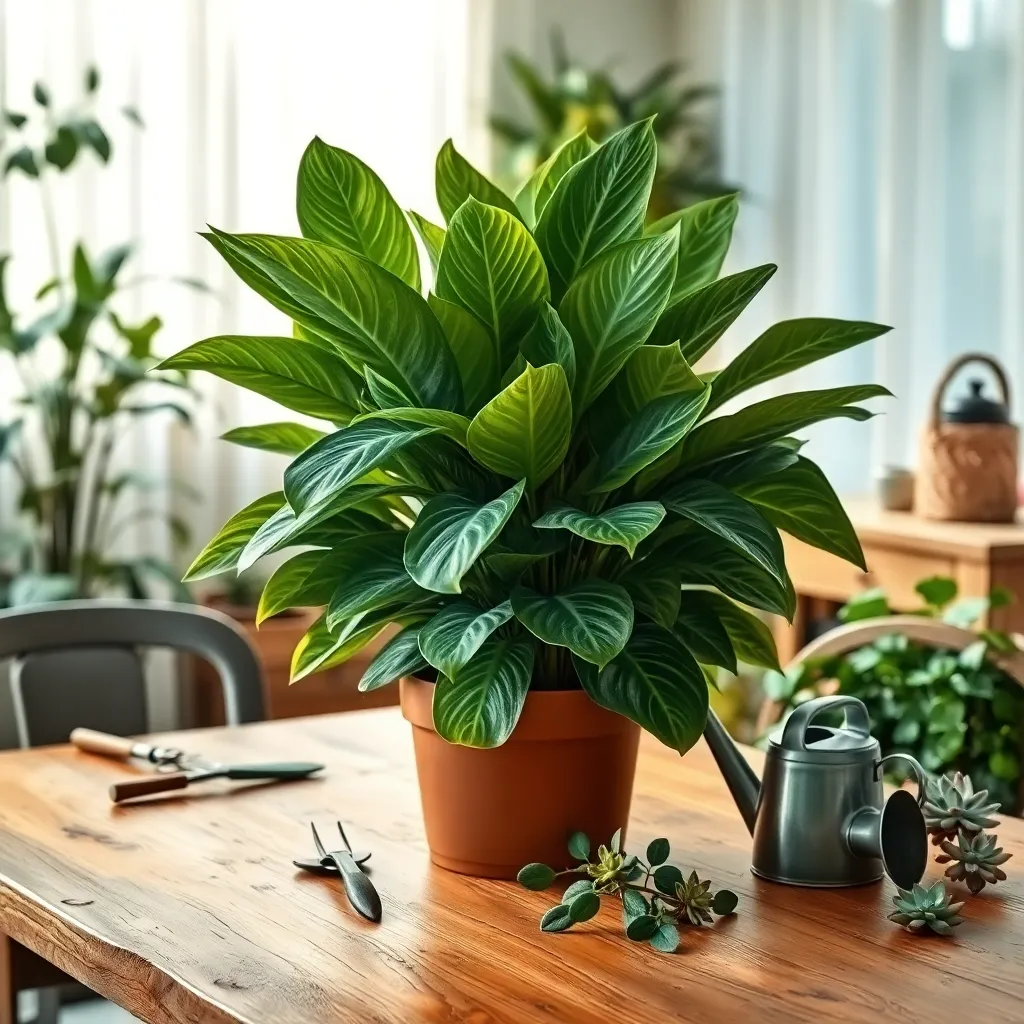
Chinese Evergreen (Aglaonema spp.) is a popular choice for those who want low-maintenance greenery indoors. With its stunning variegated leaves and ability to thrive in low-light conditions, it’s perfect for busy individuals.
This plant prefers well-draining potting soil enriched with peat moss or perlite to maintain adequate moisture levels. Water your Chinese Evergreen when the top inch of the soil feels dry, but be cautious to avoid overwatering, which can lead to root rot.
To encourage vibrant leaf color, place the plant in a location with indirect sunlight. While Aglaonema can tolerate low light, bright, indirect light can enhance its growth and coloration.
If you’re looking to boost your Chinese Evergreen’s growth, consider feeding it with a balanced liquid fertilizer every 4-6 weeks during the growing season. For those interested in propagation, you can easily multiply your plant by dividing it during repotting—a simple way to expand your indoor jungle.
Rubber Plant (Ficus elastica)
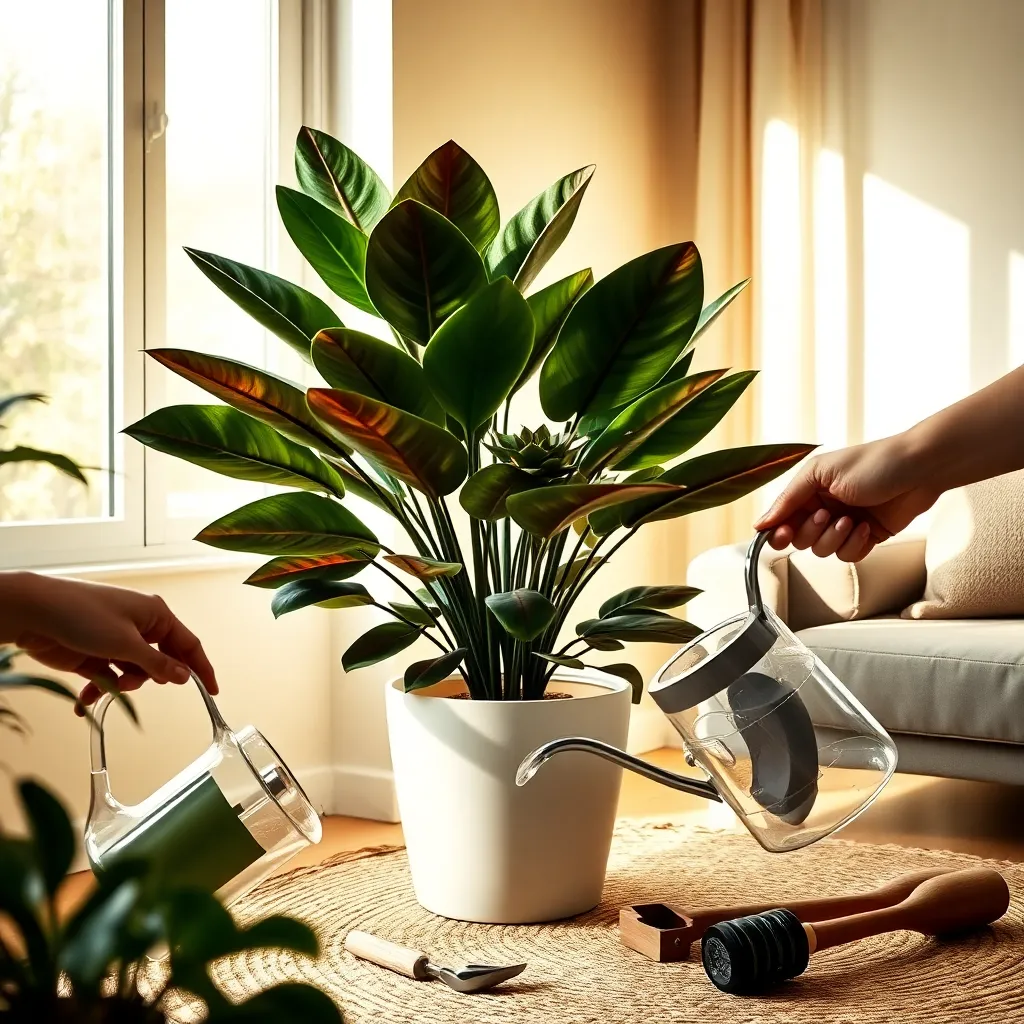
The Rubber Plant (Ficus elastica) is a fantastic choice for those who desire low-maintenance greenery indoors. Known for its striking glossy leaves, this plant thrives with minimal effort, making it perfect for busy individuals.
To ensure your Rubber Plant flourishes, place it in bright, indirect light. Direct sunlight can scorch its leaves, so a spot near a north or east-facing window is ideal.
Water your Rubber Plant when the top inch of soil feels dry to the touch. Overwatering can lead to root rot, so ensure the pot has good drainage.
For more vibrant growth, consider using a well-draining potting mix, such as one with peat, pine bark, and perlite. Fertilize during the growing season with a balanced liquid fertilizer every month for optimal health.
Dracaena (Dracaena marginata)

Dracaena marginata, commonly known as the Madagascar Dragon Tree, is a fantastic choice for anyone looking for a low-maintenance indoor plant. Its striking, sword-like leaves add a touch of elegance to any room, making it a popular option for busy individuals who still want to enjoy some greenery.
This plant thrives in bright, indirect light but can also tolerate lower light levels, making it adaptable to various indoor environments. To ensure healthy growth, place it near a window with filtered sunlight, and rotate the pot occasionally to encourage even growth.
When it comes to watering, Dracaena marginata prefers its soil to dry out between waterings. Water the plant thoroughly, allowing excess water to drain, and wait until the top inch of soil feels dry before watering again.
For optimal growth, use a well-draining potting mix, such as one designed for succulents or a general houseplant mix with added perlite or sand to improve drainage. Fertilize once a month during the growing season with a balanced liquid fertilizer to boost its vibrant foliage, but skip fertilizing during the winter months.
Aloe Vera (Aloe barbadensis miller)
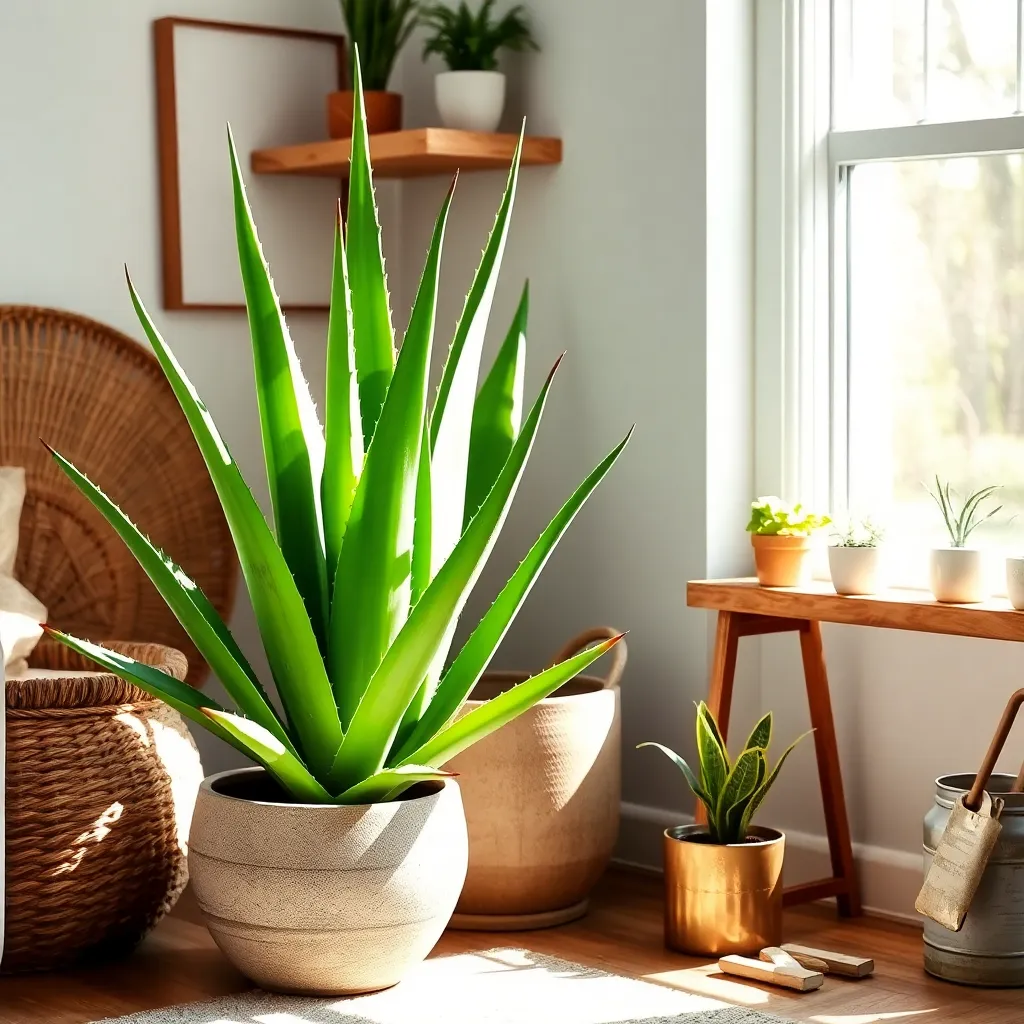
Aloe vera, a resilient and low-maintenance succulent, is perfect for busy individuals looking to add greenery indoors. This plant thrives in bright, indirect light, making it ideal for a sunny windowsill where it can soak up the morning sun.
Watering aloe vera is straightforward and infrequent, as it prefers to dry out between waterings. During the growing season, water approximately every three weeks, but in winter, reduce the frequency to once a month.
For optimal growth, use a well-draining potting mix, such as one formulated for cacti and succulents. A pot with drainage holes is essential to prevent root rot, a common issue with aloe vera if the roots remain wet.
Advanced gardeners can propagate aloe vera easily by removing offsets, known as “pups,” that grow around the base of the main plant. Simply separate the pups from the parent plant and replant them in their own pots, ensuring they have room to establish roots.
Philodendron (Philodendron hederaceum)

Philodendron hederaceum, commonly known as the heartleaf philodendron, is a popular indoor plant due to its tolerance of low light and easy care requirements. It thrives in bright, indirect light but can adapt to lower light conditions, making it ideal for various home environments.
For optimal growth, plant your philodendron in well-draining soil, such as a peat-based mix. Water the plant when the top inch of soil feels dry to the touch, ensuring you avoid waterlogging, which can lead to root rot.
To encourage bushier growth, regularly prune the stems, especially if they become leggy. Fertilize with a balanced, water-soluble fertilizer every 4-6 weeks during the growing season to maintain lush foliage.
Advanced gardeners can propagate their philodendron through stem cuttings, which root easily in water or soil. Maintain a consistent temperature between 65°F and 80°F for best results, as philodendrons prefer a warm, stable environment.
Cast Iron Plant (Aspidistra elatior)
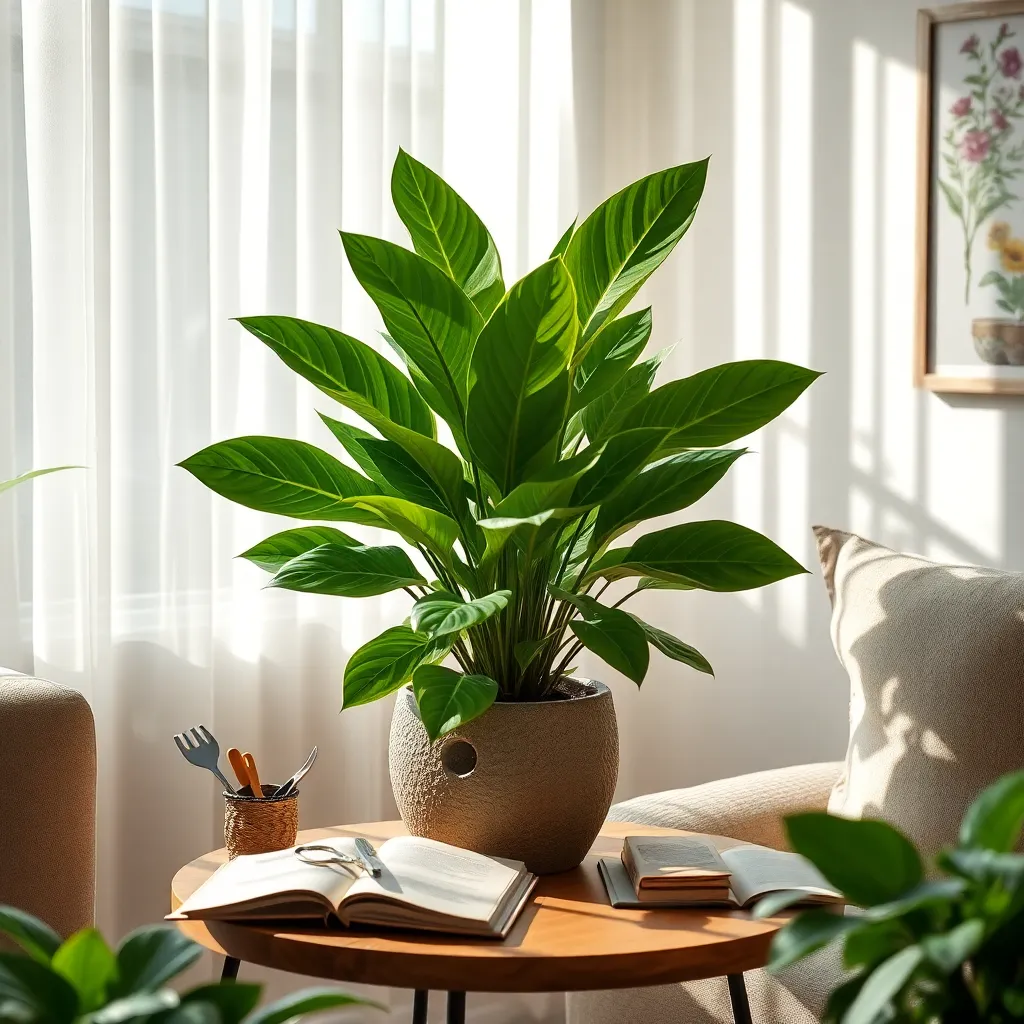
The Cast Iron Plant (Aspidistra elatior) is renowned for its resilience, making it an ideal choice for gardeners with a busy lifestyle. It thrives in low light conditions and is highly tolerant of neglect, making it perfect for those who may not always remember to water their plants regularly.
To ensure optimal growth, place your Cast Iron Plant in a spot with indirect light and use well-draining potting soil. Watering should be done sparingly; allow the soil to dry out between waterings, approximately every 10 to 14 days, to prevent root rot.
For those looking to give their plant an extra boost, consider feeding it with a balanced liquid fertilizer once a month during the growing season. Even with minimal care, the Cast Iron Plant can live for years, providing lush greenery to any indoor space.
Advanced gardeners might experiment with propagation by division, which is best done in the spring. Simply separate the rhizomes and plant them in fresh soil, ensuring each section has a few leaves to increase the chance of successful growth.
Boston Fern (Nephrolepis exaltata)

Boston Fern (Nephrolepis exaltata) is a lush, vibrant choice for those seeking to add a touch of green to their indoor spaces. Known for its feathery fronds, this plant thrives in environments with high humidity and indirect light, making it perfect for bathrooms or kitchens.
To ensure your Boston Fern remains healthy, it’s crucial to maintain consistently moist soil. Water it regularly, but be cautious of overwatering, as soggy soil can lead to root rot.
For optimal growth, use a well-draining soil mix enriched with organic matter to support its nutrient needs. An occasional misting can help maintain humidity levels, especially during dry winter months.
Although Boston Ferns are relatively easy to care for, they do benefit from a little extra attention. Trim away any brown or dead fronds to encourage new growth and keep the plant looking its best.
Jade Plant (Crassula ovata)
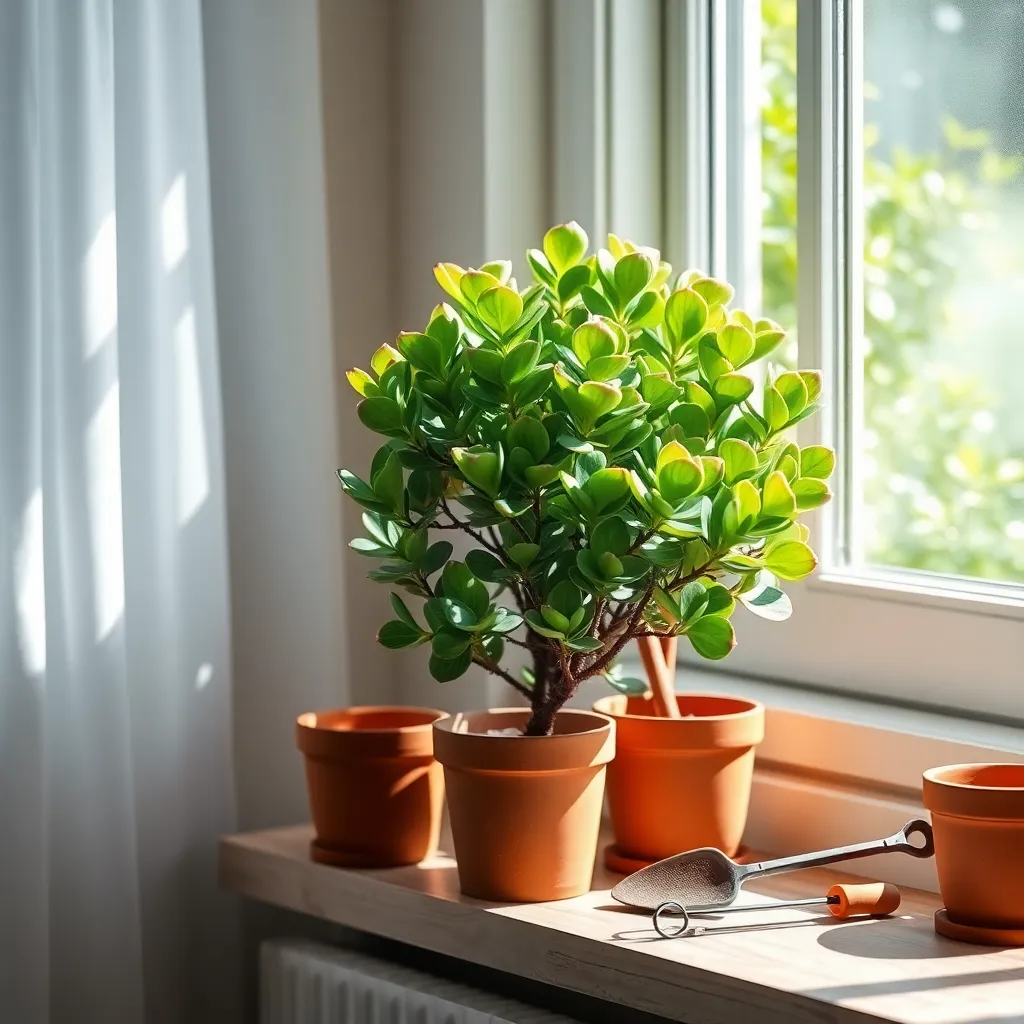
Jade Plant (Crassula ovata), often known as the money tree, is a resilient indoor plant perfect for busy individuals. Its succulent leaves store water, making it exceptionally drought-tolerant and ideal for those who might occasionally forget to water.
To keep your jade plant thriving, place it in a spot where it can receive at least four hours of bright, indirect sunlight daily. While it can tolerate lower light, direct sunlight enhances its growth and vibrant leaf color.
When it comes to watering, allow the soil to dry out completely between waterings. Overwatering is the most common issue with jade plants, so it’s better to err on the side of caution and water less frequently.
For optimal growth, use a well-draining potting mix, such as a cactus or succulent blend. Fertilize sparingly, about once every six months, with a balanced houseplant fertilizer to ensure your jade plant remains healthy and lush.
Conclusion: Growing Success with These Plants
In this article, we’ve explored the top 10 indoor plants perfect for busy individuals seeking to nurture not only their green thumb but also their relationships. We’ve delved into how plants like the resilient Snake Plant and the adaptable Spider Plant symbolize the importance of resilience and adaptability in relationships. The low-maintenance Pothos and forgiving ZZ Plant remind us that even minimal efforts can yield flourishing results. Meanwhile, the peace-promoting qualities of the Peace Lily and the air-purifying benefits of Aloe Vera highlight the need for tranquility and a healthy environment in our personal connections. Each plant mirrors essential relationship values: patience, growth, and mutual care.
Now, take an immediate step by choosing one plant from our list to bring into your home, symbolizing your commitment to cultivating both your living space and your relationships. Bookmark this article to revisit these botanical inspirations whenever you need a reminder of how nature’s wisdom can enhance your personal connections.
As we look ahead, remember that nurturing relationships—like tending to plants—requires ongoing attention and care. With dedication, your connections can thrive, becoming more vibrant and resilient each day. Embrace these insights, and watch your relationships blossom.

